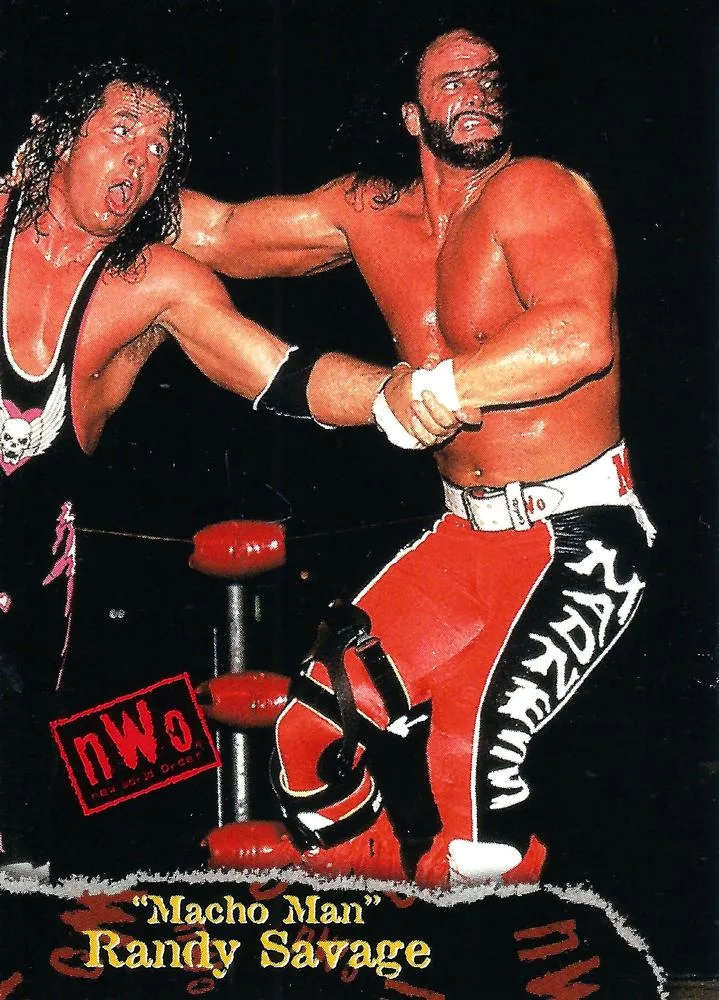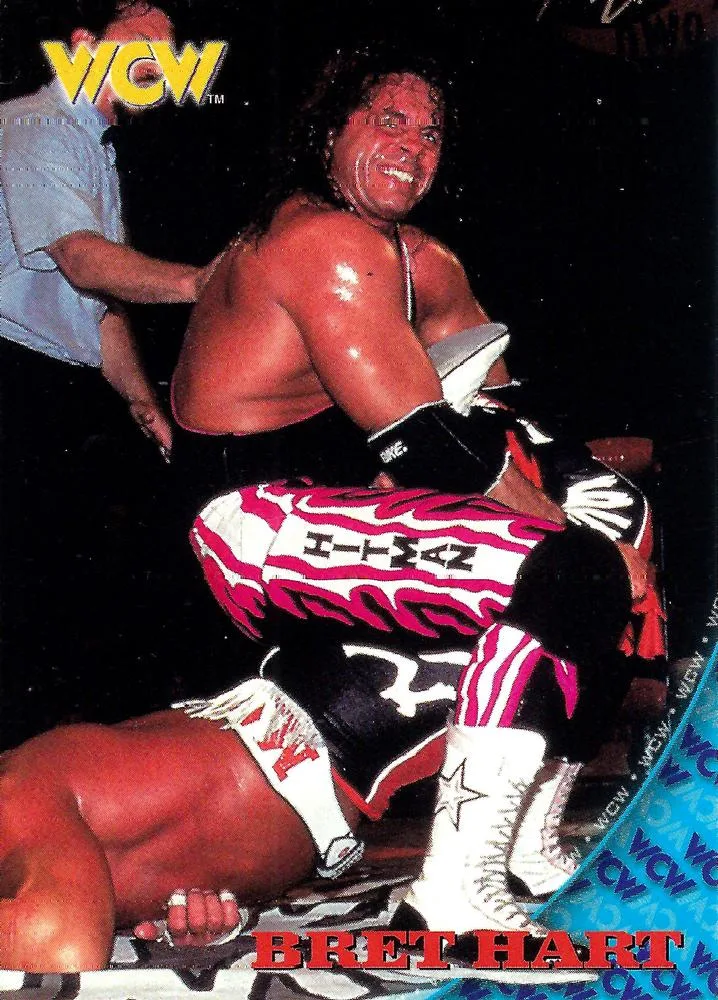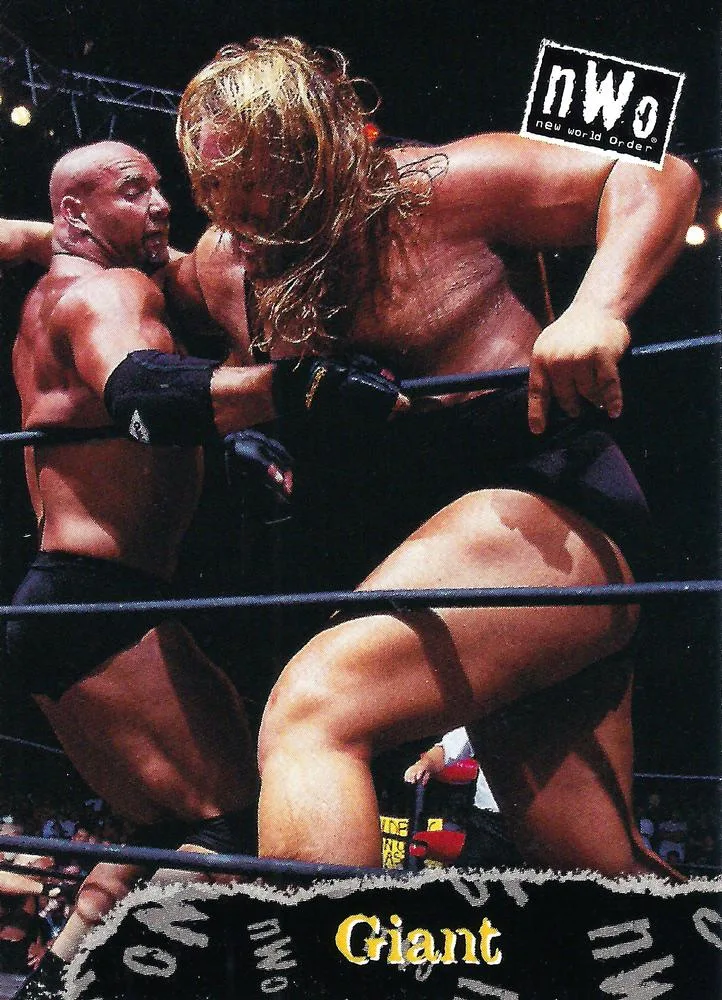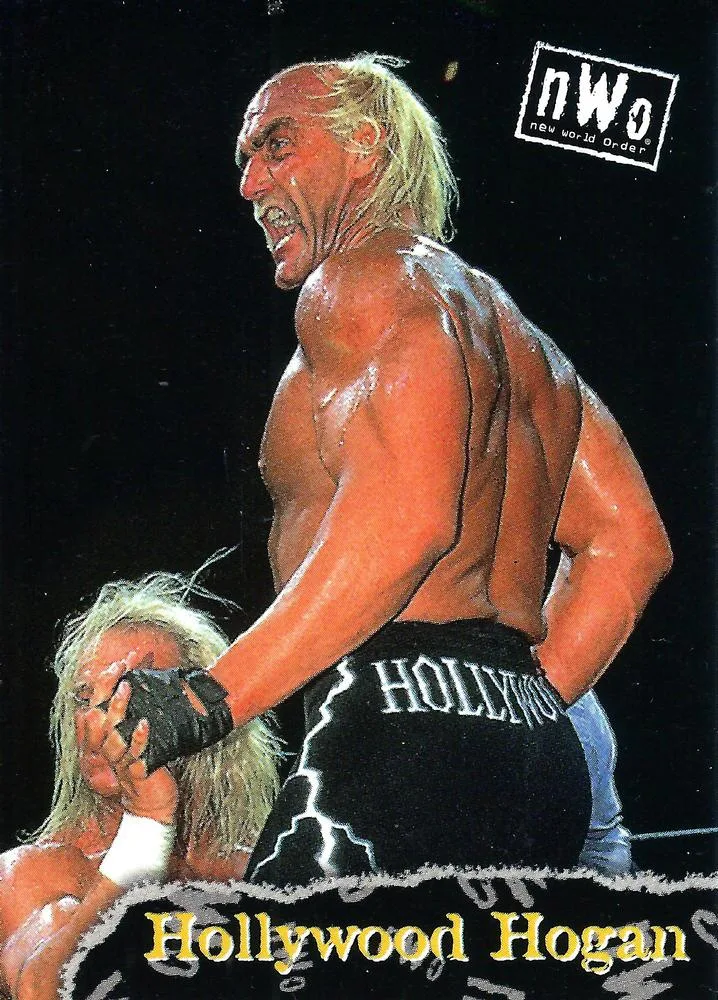
A Wrestling Phenomenon Captured in Cards
In the mid-1990s, a storyline grounded in unsettling realism captivated audiences in New Japan Pro-Wrestling (NJPW). Wrestlers from the upstart Union of Wrestling Forces International (UWFi), a promotion known for its hard-hitting, realistic “shoot-style,” began invading NJPW shows. Led by the formidable Nobuhiko Takada and featuring talents like Masahito Kakihara and Yoji Anjo, the UWFi contingent didn’t just compete; they challenged the very legitimacy of NJPW’s traditional wrestling style and established hierarchy.
This fierce rivalry pitted the invaders against NJPW icons such as Keiji Muto (The Great Muta) and Shinya Hashimoto, culminating in several high-stakes Tokyo Dome encounters between late 1995 (Muto vs. Takada) and April 1996 (Hashimoto vs. Takada).
Inspired by his trips to Japan, WCW executive Eric Bischoff saw the potential for a similar “outsider” angle in North America to revitalize WCW’s struggling product and compete with the WWF. The result was arguably the most influential –- and profitable –- faction in modern North American wrestling history: the New World Order (nWo).
How nWo Changed Wrestling
Launched in 1996 when Scott Hall and Kevin Nash arrived as “Outsiders,” claiming to be agents of a rival promotion, the storyline exploded when the team was shockingly joined by Hulk Hogan –- wrestling’s ultimate babyface for over a decade –- at Bash at the Beach 1996. Hogan’s shocking heel turn cemented the faction’s status as a cultural phenomenon, and by 1998, this invasion had propelled World Championship Wrestling to the top of the Monday Night Wars.

The nWo’s edgy, anti-establishment attitude and “cool villain” persona resonated powerfully with the late ’90s zeitgeist, becoming a merchandising juggernaut whose simple, spray-paint style logo adorned t-shirts seen everywhere. However, by mid-1998, even as the nWo dominated, the massive faction had fractured internally.
Creative differences and Hogan’s increasingly dictatorial leadership within the original black-and-white ‘nWo Hollywood’ prompted Kevin Nash to form the breakaway red-and-black ‘nWo Wolfpac.’ Positioned as the ‘cool,’ rebellious alternative fans wanted to cheer –- complete with its iconic theme music -– the Wolfpac quickly gained popularity, blurring the lines between heel and face and intensifying the internal conflict that dominated WCW programming.

Holding the exclusive trading card license for WCW during this tumultuous peak period, Topps capitalized on the phenomenon by releasing the 1998 WCW/nWo set, perfectly timed to capture the nWo’s peak popularity and critical internal schism.
Revisiting the 1998 Topps WCW/nWo Set
The 72-card base set showcased the breadth of the roster, mixing nWo members and their opponents, but the nWo representation mirrored the ongoing civil war. The card designs visually differentiate these affiliations by using distinct faction logos and associated color schemes.
Key figures from both sides received prominent placement: Hollywood Hogan (#1), leader of nWo Hollywood, is featured alongside faction mainstays like The Giant (#7), the newly turned Scott Steiner (#12), and figurehead Eric Bischoff (#50). Representing the popular Wolfpac (often with red/black card elements) are its leader, Kevin Nash (#3), Randy Savage (#4), and Konnan (#21). Scott Hall’s card (#10) captures another founding member amidst the turmoil, typically still in the original nWo colors at the time of the set’s production window.

While the base set captured this core conflict, inserts added further chase elements. Chrome parallel cards offered shiny versions of the top 10 stars, including nWo members like Hogan, Nash, and Savage. An 11-card set of Sticker cards also featured top names, mixing nWo leaders like Hogan and Nash with their WCW rivals.
Perhaps the most significant aspect for collectors, tying directly into the nWo’s star power, was the “Authentic Autographs” insert set. This subset featured the first-ever pack-certified autographs of nWo kingpins Hulk Hogan and Kevin Nash, alongside other faction members. For collectors, pulling an autograph of an nWo member was the ultimate prize. It offered a rare, tangible connection to main-event stars previously unavailable in packs and significantly elevated the wrestling card Hobby beyond simple picture cards.
The Legacy of 1998 Topps nWo
In today’s market, the 1998 Topps WCW/nWo set’s value hierarchy clearly reflects those autographs’ importance. The undisputed chase card and most valuable single is the Hollywood Hogan Authentic Autograph. As his first pack-certified signature, and representing the nWo’s leader at peak popularity, high-grade examples (PSA 9 or 10) usually command the highest prices for the set.
The Kevin Nash autograph follows as the second most valuable card, also fetching strong prices, particularly when graded. Other autographs, especially from Hall-of-Famers included in the set, hold considerable value compared to base cards and sealed Hobby Boxes, offering the potential for these coveted autographs to also remain highly sought after.

While the nWo attempted various reunions and revivals in subsequent years -– including the controversial “nWo Elite” merger in 1999, the short-lived “nWo 2000” in WCW’s dying days, and a final run in WWE in 2002 -– none recaptured the lightning-in-a-bottle energy of that initial era. Holding a Hogan autograph, a Nash base card, or even a pack wrapper bearing the iconic logo from this 1998 set transports collectors back to when the nWo felt truly revolutionary and unstoppable.
These cards are enduring symbols of the original invasion’s zenith and a testament to the group’s pervasive influence on wrestling and pop culture. But the nWo wasn’t the only force in WCW. In Part 2 of this article miniseries, we’ll delve into the WCW loyalists featured in the set, examining the heroes, rising stars, and key rookie cards representing the resistance against the black and white (and red).